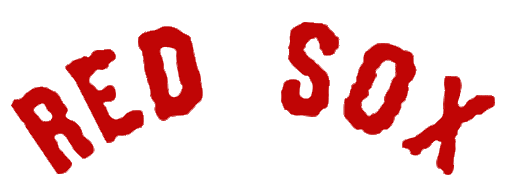World Series Flashback: 1915 – Game Three
June 14, 2009 by kevin mcguire
Filed under Fan News
The Philadelphia Phillies made their first appearance in the World Series in 1915, when they challenged a talented Boston Red Sox squad. The Phillies came in to their first Fall Classic as the clear underdogs as Boston was familiar with post-season play.
Featuring pitcher Grover Cleveland Alexander and power hitter Gavy Craveth, the Phillies would face a stiff test in the Red Sox, who were loaded with so much talent that young pitcher Babe Ruth only made one appearance in the Series, as a pinch hitter.
We continue our phlashback with a look at game three of the 1915 World Series, played in Boston.


Boston Red Sox (101-50) vs. Philadelphia Phillies (90-62)
Game Three: Red Sox Win 2-1, Take 2-1 Series Lead
When you think of the Boston Red Sox and the World Series you probably try to picture the scene. That image probably consists of Fenway Park and the green monster, right? In the 1915 World Series though that image would be incorrect.
Fenway Park had been open for four seasons but the Red Sox opted to leave their own stadium and play their home games in Braves Field, home of the Boston Braves.
The Braves had a larger stadium capacity, so the Red Sox could make more money away from Fenway Park. The field dimensions were different in Braves Field, though, and those differences may have come in to play.
The Phillies sent Grover Cleveland Alexander back to the mound for his second start of the World Series. Alexander had won game one just three days earlier and seemed poised to earn his second victory to regain the lead in the Series.
Catcher Ed Burns put the Phillies on the scoreboard first in the third inning against Red Sox pitcher Dutch Leonard. Burns led off with a single to right field and reached second base on a fielding error on a bunt attempt by Alexander.
Alexander was safe at first base. After a bunt ground out by third baseman Milt Stock moved the base runners into scoring position, shortstop Dave Bancroft hit a single to center field, scoring Burns.
Alexander held at third and Bancroft moved to second on the throw home. The Phillies though failed to capitalize with two men in scoring position and only one out.
Center fielder Dode Paskert and right fielder Gavvy Craveth both hit pop fly outs to end the inning and leave the base runners stranded.
Craveth’s pop fly to end the inning though was made at the deep part of left field. With the game being played in Braves Field, nobody gave it too much thought, but if the game had been played in Fenway Park the ball likely would have been an extra base hit, if not a home run.
The Phillies would have scored one run for sure, possibly two, and may have been able to take control of the game. Who knows?
Those stranded runners would come back to haunt the Phillies.
Boston tied the game at one in the bottom of the fourth inning. Boston center fielder Tris Speaker hit a one out triple and scored on a Dick Hoblitzel sacrifice fly.
Philadelphia failed to get anything going offensively the rest of the way, failing to reach base for the rest of the game. The game was tied entering the ninth inning.
Red Sox right fielder Harry Hooper lead off the ninth inning with a single to right field off of Alexander. Hooper moved to second on a sacrifice bunt, and Alexander intentionally walked Speaker to set up a double play possibility.
Hoblitzel grounded out, but the only play available was at first. Boston put two runners in scoring position, but the only one that mattered in the 1-1 game, with two outs, was Hooper’s potential game-winner sitting at third base.
Left fielder Duffy Lewis stepped to the plate for the Red Sox, and quickly became the hero. Lewis slapped a single to right field, scoring Hooper and giving the Red Sox a tight 2-1 victory. The win also gave the Red Sox a 2-1 lead in the series.

